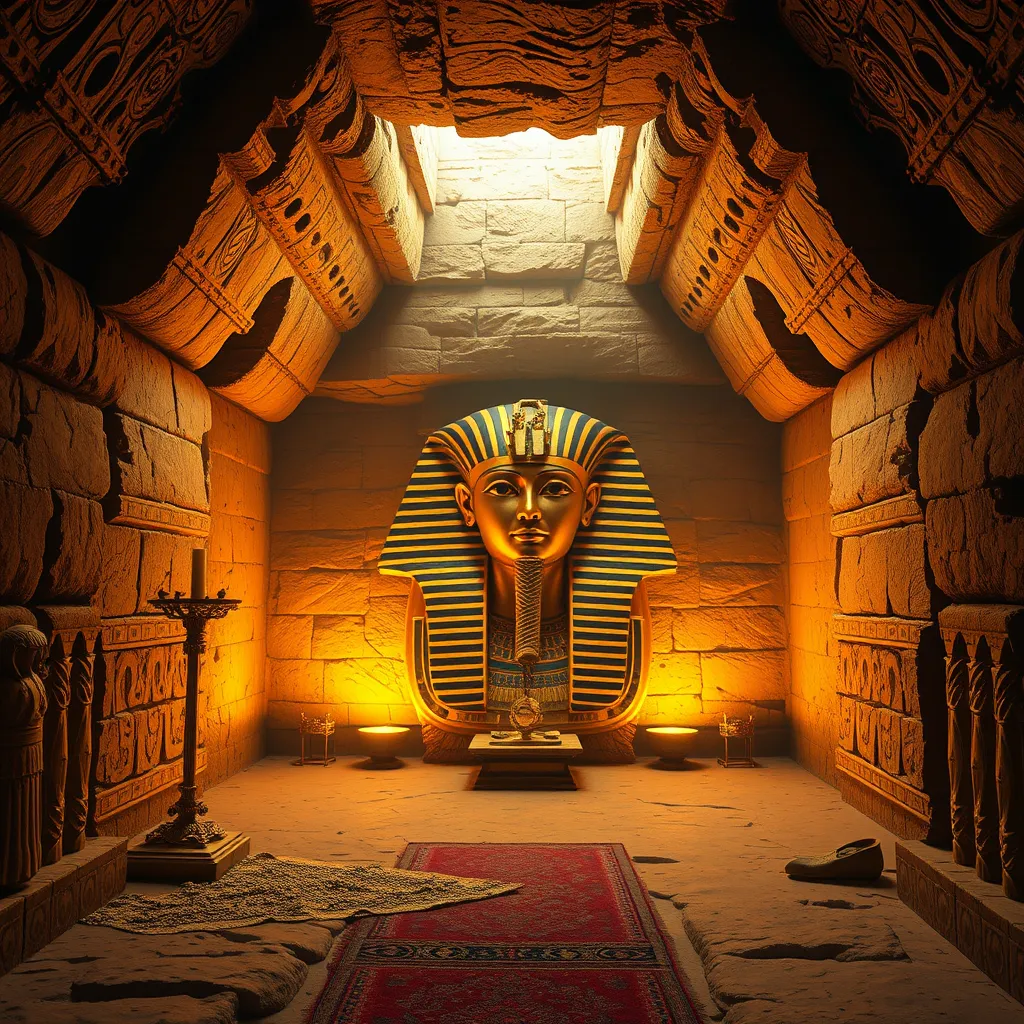The Pharaoh’s Tomb: A Journey into the Secrets of the Ancient World
I. Introduction
The pharaohs of ancient Egypt were not merely rulers; they were considered divine entities, embodying the gods on Earth. They played a critical role in the governance, religion, and culture of ancient Egyptian society. The significance of their reigns is reflected in the monumental architecture and the elaborate burial practices that characterized their legacies.
This article aims to delve into the mysteries surrounding the tombs of these ancient kings, exploring their historical context, architectural marvels, and the treasures contained within, as well as the ongoing fascination they inspire today.
II. The Historical Context of Pharaohs
A. The role of pharaohs in ancient Egyptian society
Pharaohs were seen as intermediaries between the gods and the people, responsible for maintaining ma’at, or cosmic order. They oversaw the economy, military campaigns, and monumental construction projects. The pharaoh’s authority was absolute, and their divine status was reinforced through elaborate rituals and public works.
B. The evolution of tomb construction through different dynasties
The design and construction of tombs evolved significantly over the centuries:
- **Early Dynastic Period:** The use of mastabas, flat-roofed structures, marked the earliest phase.
- **Old Kingdom:** This era saw the construction of the iconic pyramids, with the Great Pyramid of Giza being the most notable.
- **Middle Kingdom:** Tombs became more elaborate, transitioning to rock-cut tombs.
- **New Kingdom:** Pharaohs like Tutankhamun were buried in richly adorned tombs within the Valley of the Kings.
III. The Architecture of the Pharaoh’s Tomb
A. Key features of tomb design
Pharaohs’ tombs were designed to ensure a safe passage to the afterlife and typically included:
- **Pyramids:** Monumental structures serving as grand burial sites.
- **Burial Chambers:** Secluded rooms designed to hold the sarcophagus, often filled with treasures.
- **Mortuary Temples:** Associated temples for rituals and offerings to the deceased.
B. The engineering marvels of ancient construction techniques
The construction methods used to build these tombs remain a topic of admiration and study. Ancient Egyptians employed advanced techniques, including:
- **Lever systems** for moving heavy stones.
- **Ramps** to elevate blocks to significant heights.
- **Alignment** with celestial bodies, showcasing their astronomical knowledge.
IV. Symbolism and Artifacts Found in Tombs
A. Importance of tomb decorations and hieroglyphics
Tombs were richly adorned with artwork and hieroglyphics that depicted the pharaoh’s life, religious beliefs, and the journey to the afterlife. These decorations served both aesthetic and functional purposes, guiding the deceased through the afterlife.
B. Common artifacts and their meanings
Various artifacts were placed in tombs to accompany the pharaoh in the afterlife:
- **Jewelry:** Symbolizing wealth and status.
- **Tools:** Intended for use in the afterlife, reflecting the pharaoh’s earthly profession.
- **Food and drink:** Providing sustenance in the next world.
V. The Discovery of Famous Tombs
A. Notable tomb discoveries
Some of the most significant tomb discoveries have dramatically altered our understanding of ancient Egypt:
- **Tutankhamun’s Tomb (KV62):** Discovered in 1922 by Howard Carter, it was filled with incredible artifacts, revealing the opulence of the New Kingdom.
- **Ramses II’s tomb:** Noted for its size and the grandeur of its decorations, providing insight into the power of the pharaohs.
B. The impact of these discoveries on our understanding of ancient Egypt
The discoveries of these tombs have not only enriched our knowledge of ancient Egyptian burial practices but have also sparked global interest in archaeology and Egyptology, leading to further research and exploration.
VI. Theories Surrounding Tomb Curses and Legends
A. Overview of the “curse of the pharaohs” phenomenon
The idea of a curse associated with disturbed tombs gained popularity after the discovery of Tutankhamun’s tomb, where several individuals involved in the excavation reportedly died under mysterious circumstances.
B. Analysis of popular myths vs. historical facts
While the concept of a curse is intriguing, many historians and archaeologists attribute the deaths to natural causes, such as infections or accidents, rather than supernatural phenomena.
VII. Modern Archaeological Techniques in Tomb Exploration
A. Advances in technology
Modern archaeology employs advanced technologies to explore and preserve tombs, including:
- **Ground-penetrating radar:** To detect hidden chambers without excavation.
- **3D imaging:** To create detailed models of tombs and artifacts.
B. The importance of preserving ancient tombs for future generations
Preservation efforts are crucial to protect these ancient sites from environmental degradation, looting, and tourism impacts, ensuring that future generations can continue to learn from and appreciate this rich heritage.
VIII. Conclusion
The mysteries surrounding pharaohs’ tombs continue to captivate scholars and enthusiasts alike. From their intricate designs and the treasures within to the legends that surround them, these tombs offer a glimpse into the beliefs and practices of one of history’s most fascinating civilizations.
The legacy of ancient Egypt, embodied in these monumental tombs, persists in contemporary culture and scholarship, reminding us of the enduring human quest for understanding life, death, and the universe beyond.




